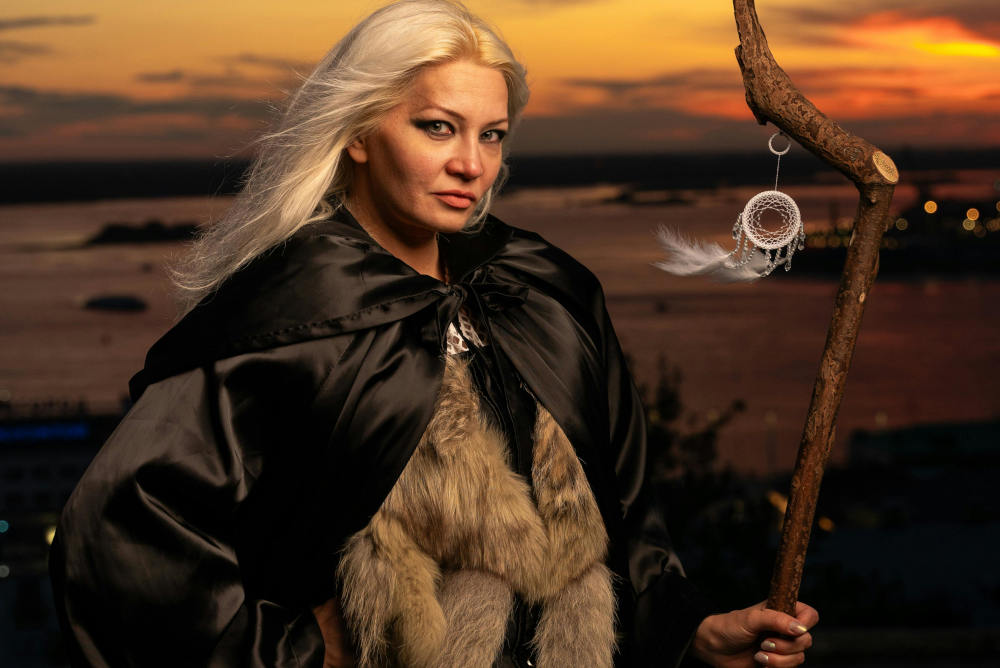
Druidism and Paganism are often associated with nature-based spirituality, ancient traditions, and a deep respect for the Earth. While they are closely linked and sometimes overlap, they are not the same. Druidism is a specific spiritual path or philosophy, while Paganism is a broad umbrella term that includes many different belief systems, including Druidism itself.
This article explores the key similarities and differences between Druidism and Paganism, tracing their historical roots, examining their core beliefs and practices, and looking at how they are expressed today.
Panaprium is independent and reader supported. If you buy something through our link, we may earn a commission. If you can, please support us on a monthly basis. It takes less than a minute to set up, and you will be making a big impact every single month. Thank you!
What Is Paganism?
Paganism is a general term that refers to a wide range of polytheistic, nature-based, and Earth-centered spiritual traditions. The term originally comes from the Latin paganus, meaning "country dweller" or "civilian," and was used by early Christians to describe those who followed non-Christian religions, especially the traditional polytheistic religions of the Roman Empire.
Today, Paganism is often used to refer to modern revivals of ancient pre-Christian religions. These modern forms are commonly referred to as Neopaganism, which includes a variety of paths such as:
-
Wicca
-
Heathenry
-
Hellenism
-
Reconstructionist Paganism
-
Eclectic Paganism
-
Druidism
Each form of Paganism draws on different cultural and historical sources, but they generally share core values such as:
-
Reverence for nature
-
Celebration of seasonal cycles (solstices, equinoxes, harvests)
-
Polytheism or pantheism
-
Ritual practices honoring deities, ancestors, or natural forces
Paganism does not have a single holy text, centralized authority, or uniform set of beliefs. Instead, it is highly diverse and flexible, allowing individuals to choose paths that resonate with their personal connection to the divine and the natural world.
What Is Druidism?
Druidism (or Druidry) is a spiritual path inspired by the ancient Druids of Celtic cultures. Historically, Druids were members of the educated priestly class in ancient Celtic societies of Britain, Ireland, and Gaul (modern-day France). They were philosophers, teachers, healers, judges, and mediators between the physical and spiritual worlds.
The original Druidic tradition was oral and left no written texts, so much of what is known about them comes from Roman sources such as Julius Caesar—often biased and incomplete—and from medieval Irish mythology.
Modern Druidism, also known as Neo-Druidism, emerged during the 18th and 19th centuries as part of the Romantic and Celtic Revival movements. Today, Druidism is practiced by individuals and organizations that seek to revive or reimagine the wisdom of the ancient Druids.
Key features of modern Druidism include:
-
A deep spiritual connection with nature and the land
-
Reverence for ancestors and the spirits of place
-
Celebration of the Wheel of the Year (solstices, equinoxes, and cross-quarter festivals like Imbolc and Samhain)
-
Poetry, storytelling, music, and creativity as sacred acts
-
Focus on wisdom, justice, and ecological responsibility
Druidism is typically non-dogmatic and allows for a wide range of beliefs, including pantheism, polytheism, animism, and even agnosticism or atheism.
Key Differences Between Druidism and Paganism
While Druidism is a form of Paganism, there are some important distinctions to consider.
1. Scope and Definition
-
Paganism is an umbrella term that includes many different traditions.
-
Druidism is a specific spiritual path within Paganism, much like Wicca or Heathenry.
In other words, all Druids are Pagans, but not all Pagans are Druids.
2. Cultural and Historical Roots
-
Paganism can draw from many ancient cultures—Greek, Roman, Norse, Egyptian, Slavic, and more.
-
Druidism specifically draws from Celtic traditions and mythology.
Modern Pagans may follow Greek gods like Zeus or Artemis, Norse gods like Odin or Freya, or create eclectic practices with no strict historical basis. Druids typically connect to Celtic deities like Brigid, Lugh, or Cernunnos and work with elements of Celtic cosmology.
3. Organizational Structure
-
Paganism is loosely organized, and many Pagans are solitary practitioners or belong to small groups called covens, groves, or circles.
-
Druidism has several large, established orders, such as:
-
OBOD (Order of Bards, Ovates and Druids)
-
ADF (Ár nDraíocht Féin – A Druid Fellowship)
-
The Druid Network
-
These organizations often offer training programs, rituals, community events, and spiritual teachings.
4. Core Practices and Emphases
While both paths honor nature and the sacredness of life, Druidism emphasizes:
-
The Bardic arts – storytelling, poetry, song
-
The Ovate path – healing, divination, connection to the ancestors
-
The Druid path – wisdom, leadership, ritual facilitation
This threefold division (Bard, Ovate, Druid) reflects roles that may have existed in ancient Celtic society.
Paganism, depending on the tradition, may focus more on magic, spellcraft, worship of specific pantheons, or seasonal festivals. For example, Wiccans often use ritual tools like athames and pentacles, and follow a dual-god and goddess system.
Shared Values and Beliefs
Despite their differences, Druidism and other forms of Paganism share many common themes:
1. Nature-Centered Spirituality
Both traditions view nature as sacred and see the divine in the Earth, sky, trees, rivers, and animals. Many practitioners are deeply committed to environmental activism and Earth-based ethics.
2. Celebration of Seasonal Cycles
Both follow the Wheel of the Year, which includes eight major festivals:
-
Samhain (end of harvest, ancestor veneration)
-
Yule (Winter Solstice)
-
Imbolc (first signs of spring)
-
Ostara (Spring Equinox)
-
Beltane (fertility, fire festival)
-
Litha (Summer Solstice)
-
Lughnasadh (first harvest)
-
Mabon (Autumn Equinox)
These festivals honor the rhythms of nature, the agricultural cycle, and the shifting balance of light and darkness.
3. Personal Experience Over Dogma
Neither Paganism nor Druidism relies on a single holy book or authoritative doctrine. Instead, personal experience, intuition, and direct relationship with the natural and spiritual world are emphasized.
4. Reverence for the Ancestors
Many practitioners honor their ancestors through ritual, meditation, or offerings. Ancestral connection is seen as a source of wisdom and strength.
Modern Expressions
Today, both Paganism and Druidism are part of a global spiritual movement that continues to grow. Practitioners come from all walks of life and may combine their path with other spiritual practices such as meditation, yoga, astrology, or environmental activism.
Modern Druidism, especially, has found resonance with people seeking a non-dogmatic, Earth-honoring, creative path. Many Druids participate in public rituals at ancient sites like Stonehenge or Glastonbury and work toward sustainable living and community building.
Pagans may be drawn to more eclectic or magical paths, and many practice solitary rituals, attend Pagan festivals, or join online communities.
Criticism and Misconceptions
Both Druidism and Paganism have faced misunderstanding and suspicion. In the past, they were often mischaracterized as devil worship or superstition. Today, most practitioners focus on healing, balance, and harmony with nature—not supernatural control or dark rituals.
Some scholars criticize modern Druidism as lacking historical accuracy, since so little is known about the original Druids. However, many Druids embrace the idea that theirs is a reconstructed or inspired tradition rather than a literal continuation.
Paganism has also been misunderstood, especially in cultures dominated by Abrahamic religions. Yet, increasing awareness and interfaith dialogue have helped to normalize Pagan beliefs as legitimate spiritual paths.
Conclusion: Druidism Within the Pagan Family
Druidism and Paganism are closely related but distinct. Paganism is a broad category that includes many different spiritual paths, while Druidism is one specific path within that larger family. Paganism can be eclectic and draw from many cultures, while Druidism is rooted in Celtic traditions and emphasizes poetry, wisdom, and nature reverence.
Both traditions offer meaningful spiritual alternatives for people seeking to reconnect with the Earth, honor ancestral wisdom, and live in harmony with natural rhythms. Whether someone identifies as a Druid, a Pagan, or both, these paths encourage deep reflection, creativity, and personal transformation.
Was this article helpful to you? Please tell us what you liked or didn't like in the comments below.
About the Author: Alex Assoune
What We're Up Against
Multinational corporations overproducing cheap products in the poorest countries.
Huge factories with sweatshop-like conditions underpaying workers.
Media conglomerates promoting unethical, unsustainable products.
Bad actors encouraging overconsumption through oblivious behavior.
- - - -
Thankfully, we've got our supporters, including you.
Panaprium is funded by readers like you who want to join us in our mission to make the world entirely sustainable.
If you can, please support us on a monthly basis. It takes less than a minute to set up, and you will be making a big impact every single month. Thank you.































0 comments